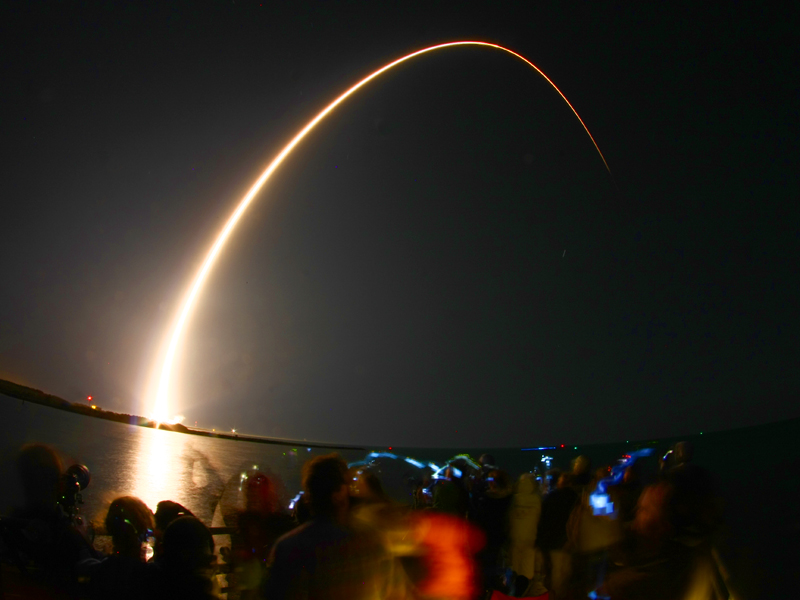
|
Credit & Copyright: Ben Cooper
Explanation:
Streaking
skyward,
a Delta II rocket carries NASA's Kepler spacecraft aloft
into the clear night of March 6.
The dramatic scene was recorded in a time exposure from the crowded pier
in Jetty Park at the northern end of Cocoa Beach, Florida, about 3 miles
from the Cape Canaveral launch site.
Kepler's
mission is to search for Earth-like planets
orbiting in the
habitable zone
of other stars.
A planet orbiting within a star's habitable
zone would have a surface temperature
capable of supporting liquid water, an essential ingredient for life as
we know it.
To find Earth-like planets, Kepler's telescope and large, sensitive
camera will examine
a rich star field near the plane of our Milky Way Galaxy.
Located in the constellation Cygnus, Kepler's
field of view
will allow it to monitor
the brightness of many stars in the solar neighborhood and detect a
slight dimming as a potential
Earth-like
planet crosses in front of the star.
|
January February March April May June July August September October November December |
| |||||||||||||||||||||||||||||||||||||||||||||||||||||||
NASA Web Site Statements, Warnings, and Disclaimers
NASA Official: Jay Norris. Specific rights apply.
A service of: LHEA at NASA / GSFC
& Michigan Tech. U.
Based on Astronomy Picture
Of the Day
Publications with keywords: launch - extrasolar planet
Publications with words: launch - extrasolar planet
See also:
- APOD: 2025 September 8 Á IRAS 04302: Butterfly Disk Planet Formation
- APOD: 2025 February 17 Á SpaceX Rocket Launch Plume over California
- APOD: 2025 January 5 Á Rocket Launch as Seen from the International Space Station
- Sky Full of SARs
- APOD: 2024 July 8 Á Exoplanet Zoo: Other Stars
- Temperatures on Exoplanet WASP 43b
- Epsilon Tauri: Star with Planet
